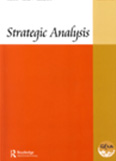Prachanda’s Visit to India: Beginning of a New Dawn
No other recent visit to India has been so eagerly awaited as that of Pushpa Kumar Dahal, alias Prachanda, the Maoist revolutionary turned democrat and Prime Minister of ‘New Nepal’. His party received a thumping mandate from the electorate in the last elections and but for the fact that 50 per cent of the seats were to be filled up by proportional representation, it could have easily crossed the half way mark in the constituent assembly. Thus, under the existing electoral procedure, the Maoists were forced to bank on other political parties to form a government.
- Alok Bansal
- October 08, 2008






